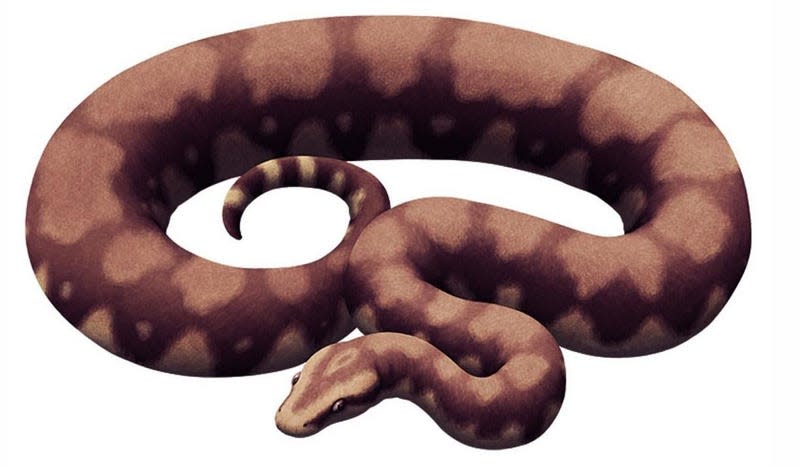50-Foot-Long Fossil Snake May Be the Largest That Ever Lived

A newly described fossil snake in India may be the largest that ever lived, according to a team that studied 27 vertebrae recovered from a lignite mine in India. The new species is dubbed Vasuki indicus—named for India and the mythical serpent that wraps itself around the neck of the Hindu god Shiva. Extrapolating the serpent’s length from the vertebrae, which appeared to come from a full-grown individual, the researchers calculated that the giant snake could have been about 50 feet (15.2 meters) long, about two and a half times longer than a giraffe is tall.
“The most important finding of our study is the identification of an exceptionally large snake, which not only adds to the existing knowledge of madtsoiid snakes but also adds to the known diversity of snakes from the Cenozoic of India,” said Sunil Bajpai, a vertebrate paleontologist at the Indian Institute of Technology Roorkee and co-author of the study, in an email to Gizmodo. The team’s research is published today in Scientific Reports.
The snake lived in India about 47 million years ago, when the subcontinent was still drifting over to Asia from Africa and average temperatures sat around 82.4 degree Fahrenheit (28 Celsius). It was a madtsoiid, an extinct family of snakes that mainly originated on Gondwana, an ancient supercontinent that contained South America, Africa, India, Australia, Arabia, and Antarctica.

“There are a number of possible reasons for its large size, which range from favorable environment with ample food resources to lack of natural predators,” Bajpai said. “Another driving force could be the prevalence of warmer climatic conditions than at present. Since snakes are poikilotherms, their internal body temperature fluctuates with the ambient temperature of the environment. So, higher ambient temperatures would have increased the internal body temperature and metabolic rate of Vasuki, which in turn would have allowed it to grow so large.”
The longest extant snake is the reticulated python (M. reticulatus), which regularly grows to over 20 feet (6.25 meters) long. According to London’s Natural History Museum, the longest specimen known was found in 1912 and measured just under 33 feet (10 meters). If the team’s estimates are correct, Vasuki may have been longer than Titanoboa, a gigantic boa that lived in South America about 60 million years ago.

“It is worth noting that the largest body-length estimates of Vasuki appear to exceed that of Titanoboa, even though the vertebral dimensions of the Indian taxon are slightly smaller than those of Titanoboa,” the study authors wrote.
Based on the distribution of other madtsoiid snakes, the research team posits that Vasuki distributed west across southern Eurasia to Africa after India smashed into Asia. A sufficiently serpentine route for such a superlative snake. Based on its size, the researchers posit that Vasuki was a slow-moving ambush predator—similar to modern-day anacondas.
“Modern snakes are not so large, possibly because the temperatures are lower at present preventing them from reaching gigantic proportions,” Bajpai said. “Loss of habitat, competition from other predators (e.g., crocodilians) and poaching may also play a role.”
I like a warm summer day as much as anyone, but I guess chilly weather is a small price to pay for skipping out on the whole “giant snake overlords” thing.
More: Scientists Found a Snake That Cartwheels Away From Danger

